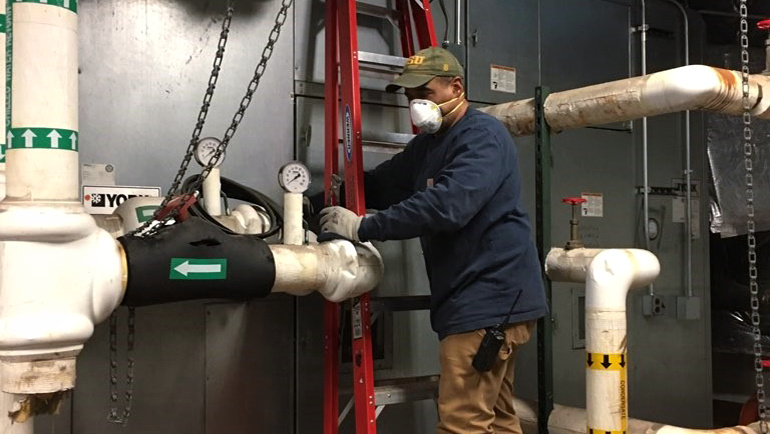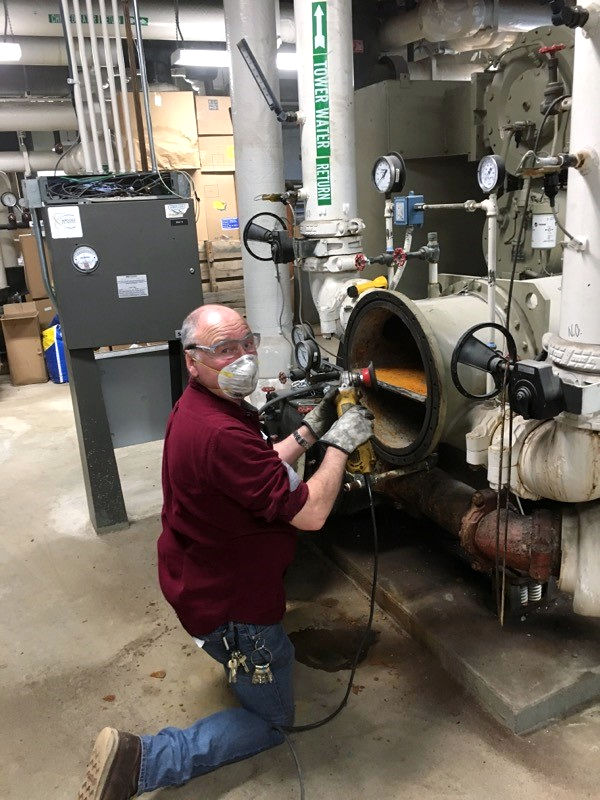
While thousands of faculty and staff members are working from home, many of Wayne State’s operating engineers have volunteered to continue working around the clock to ensure that the complex systems in 100 buildings across campus are operating, maintained and ready for workers to return.
When a building is “shut down,” it doesn’t mean there’s nothing to do. Boilers, chillers, air-handling units and sump pumps must be monitored and require general maintenance. Some buildings with laboratories also have precise climate control, air flow and temperature needs.

In fact, operating engineer Allen Kotal says doing rounds now are more important than ever.
“With a building that is populated, you can, to some extent, rely on other people to report problem such as leaks, temperatures, air flow problems, etc.,” Kotal said. “With an empty building, I'm using my senses more to detect problems. I try to pay attention to everything.”
The job has changed in other ways. Typically, an operating engineer might be responsible for one building. With minimal staffing to help with social distancing, engineers are now checking on four or five each. They’re also careful to navigate buildings with masks, gloves and frequent hand sanitizer use.
“We’ve got a lot of guys going above and beyond,” said Scott Sharp, an associate director of Facilities Planning and Management. “They have a lot of pride in our university, and they want to ensure buildings are properly maintained and cared for.”
When asked how maintaining an empty building differs from one getting regular use, operating engineer Jim Oman noted, “Fewer complaints regarding temperatures.”
Andy Batth, operating engineer, says the job remains the same, but he is able to do it more quickly with buildings unoccupied. He has however noticed a change commuting to and from campus — “no traffic.”
When things do pick back up and campus reopens for partial or full occupancy, the operating engineers — and buildings — will be ready.